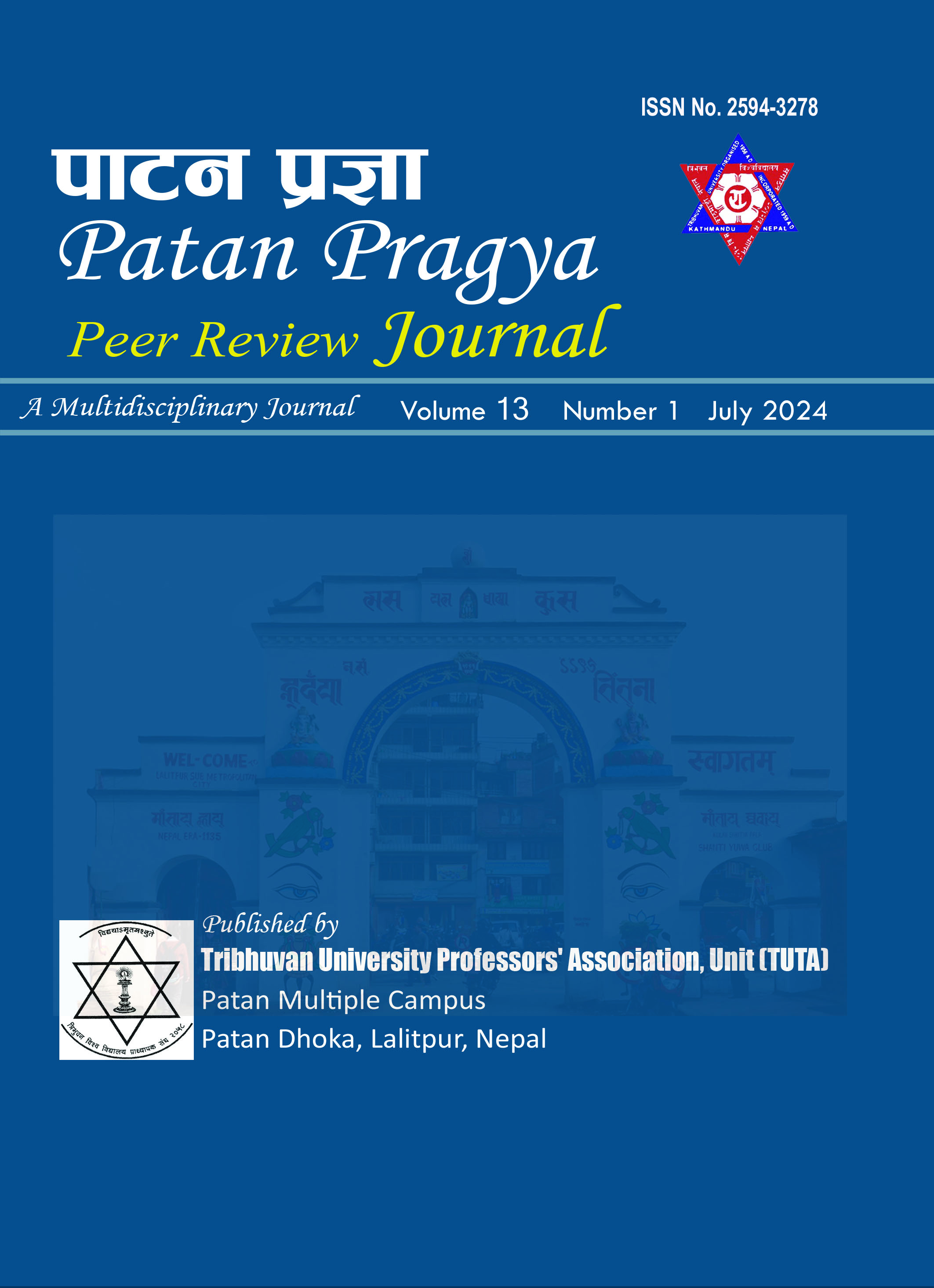Representation of Dalit Characters and Reflection of Their Consciousness in Nepali Short Stories
DOI:
https://doi.org/10.3126/pragya.v13i1.71186Keywords:
Dalit aesthetics, Consciousness, Varna system, Discrimination, Resistance and LiberationAbstract
The paper attempts to explore the position of Dalit characters and their consciousness on the contexts, contents, and issues as portrayed in the select stories from “Nepali Kathama Dalit [Dalits in Nepali Stories]” published by Nepal Academy. The stories written on Dalit subject matters and issues primarily portray the socio-economic and political positions, problems and issues of exclusion of Dalits in different forms. The characters of the stories demonstrate the miserable condition of Dalits; however, they speak up against the oppression and discrimination for their rights, equality, justice and liberation. For the purpose, the researcher has selected the stories of Khagendra Sangroula’s “Sangram Bahadur Sarki”, Narayan Dhakal’s “Sunakhari Tol”, Matrika Pokharel’s “Itihasko Chihanmathi Ubhiyera” and Krishna Bam Malla’s “Pudke Damai”. The stories are plotted on the context, issues, and problems of Dalits and their resistance against the caste system. The study basically explores the representation of the Dalit characters, their socio economic and political positions, consciousness and protest for the change. Hence, the stories are studied from the perspectives class consciousness connecting with caste consciousness. The researcher has employed the qualitative approach with descriptive and exploratory methods.
Downloads
Downloads
Published
How to Cite
Issue
Section
License
© Tribhuvan University Teachers' Association (TUTA), Patan Multiple Campus Unit

